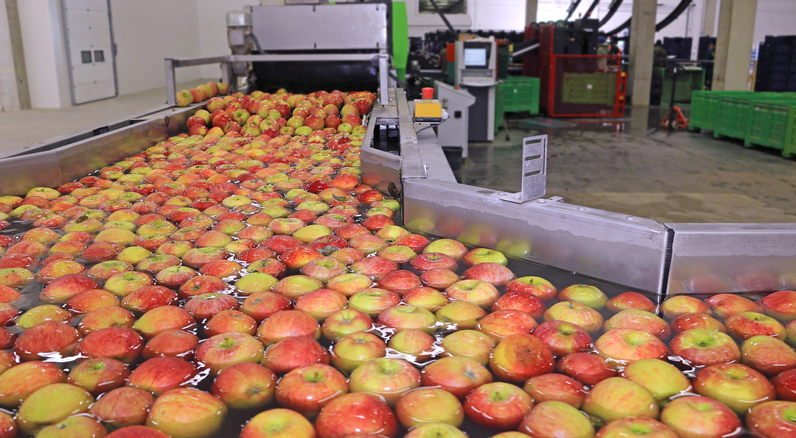Are You Unintentionally Sabotaging Your Food Safety? You May Be Surprised.
The fruit and vegetable industry is challenging, in part because so many factors are simply beyond your control…
A late spring hailstorm can damage blossoms, resulting in cosmetic defects, or a heavy frost will destroy buds limiting growth and yield.

A heat wave can scorch ripening crops, causing blemishes that are frowned upon by customers and consumers.
And with a global market, an extended season in one hemisphere can shift production plans in another.
With so much out of your hands, it’s critical to ensure that your production window is best utilized. One of the aspects you can control during this time is your water wash.

"When was the last time you read the label of your chemical sanitizing agent?"
Sanitizing wash water is a necessary process step at many fruit and vegetable processing facilities in which sanitizing agents are added to the facility’s water system at controlled levels and then used to remove field debris and light soils from the crop. A number of water management strategies must be factored in, considering a variety of water sources, chemical sanitizing agents and facility layouts. One thing that must always be consistent, however:
Following chemical label instructions.
When was the last time you read the label of your chemical sanitizing agent? Does it include the statement,
“It is a violation of Federal law to use this product in a manner inconsistent with its labeling.”?
How about requirements for a potable water rinse following the application of the product? Or different concentrations for equipment and direct food contact? Are there even instructions for direct food contact?

Recent observations during field work identified sanitizing wash use that was inconsistent with label instructions. Upon pointing this out to facility personnel, they were shocked. In using sanitizers without having read the label instructions, producers had unintentionally jeopardized the safety of their products.
"Upon pointing this out to facility personnel, they were shocked."
Admittedly, it can be confusing – some sanitizing agents are approved for direct contact with foods, while others are approved for use only when rinsed, and some can only be used on equipment.
And then there is the question of plumbing infrastructure: filters, pressure regulators, ORP and conductivity meters. It can all be a little overwhelming…
Unfortunately, the chemical sales folks aren’t around for guidance when regulators or an AIB International inspector like me arrive. Or, when a customer starts asking about “water disinfection byproducts.”
During this offseason, use the time to thoroughly review the process, process water and label instructions for sanitizer use to ensure your program meets all regulatory requirements. In doing so, you can control that aspect of production and ensure that your produce is ready to meet customer and consumer expectations.
This blog was authored by an AIB International Food Safety Professional who works with fruit and vegetable producers.

